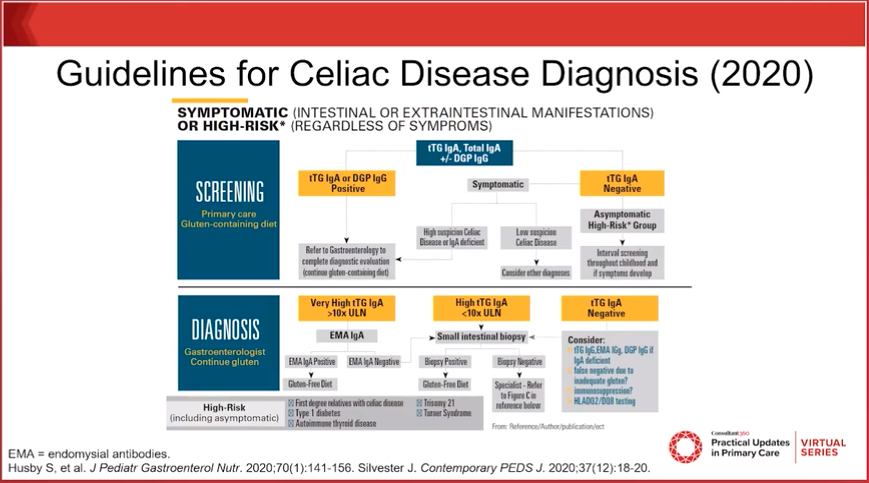Everything You Need to Know About Celiac Disease
Celiac disease is a common issue among adults and children, and gluten-related disorders can have multiple causes, such as autoimmune, allergic, or idiopathic causes. This was the topic of discussion at this afternoon’s session at Practical Updates in Primary Care 2021.
Speaker Jocelyn Silvester, MD, PhD, is an assistant professor of pediatrics at Harvard Medical School in Boston, Massachusetts.
Screening and Diagnosing Celiac Disease
Tissue transglutaminase 2 (tTG-2) immunoglobulin A (IgA) is the first-line diagnostic marker for celiac disease in every age group. However, they are not standardized across manufacturers nor are they 100% sensitive. “We know that tTG is related to celiac disease, but it isn’t an absolute link,” Dr Silvester said.

Deamidated gliadin peptide (DGP) IgG may be a potential biomarker for celiac disease, but more research is needed, Dr Silvester said.
When thinking about treating patients with celiac disease, think “CELIAC”:
- Consultation with a skilled dietitian
- Education about the disease
- Lifelong adherence to a gluten-free diet
- Identification and treatment of nutritional deficiencies
- Access to an advocacy group
- Continuous long-term follow-up by a multidisciplinary team
Limitations of a Gluten-Free Diet
Dr Silvester went on to discuss the components of a gluten-free diet and why eliminating them may or may not be beneficial for patients with celiac disease. She also mentioned that oats are controversial because they contain gluten-containing grains; not all patients with celiac disease can tolerate oats.

Is a gluten-free diet enough to “cure” celiac disease? Dr Silvester says, “probably not.” Research shows that a gluten-free diet is effective in a controlled environment like a hospital but is not as efficacious in real life, especially for children going to school.
Dr Silvester went on to discuss the North American Society For Pediatric Gastroenterology, Hepatology & Nutrition’s 2020 Celiac Disease Guidelines, which she says may offer more pathways to diagnosing celiac disease.

Schools and Children With Celiac Disease
Legislation has been passed in the United States that recognizes celiac disease as a disability, protects children from discrimination in schools, and protects children from gluten contamination. The Rehabilitation Act (1973) Section 504, Individuals With Disabilities Education Act (IDEA), and Americans With Disabilities Act (ADA) are some examples Dr Silvester discussed.
Certain school activities are higher risk for cross-contaminating gluten with non-gluten products as well. Dr Silvester says that washing pots and pans, silverware, hands, and so on is sufficient to reduce cross-contamination, but she also recommends that some activities be avoided altogether.

For more information regarding 504 plans and recommendations for children with celiac disease in schools, visit https://celiac.org/schoolmanagementplan.
—Amanda Balbi
Reference
Silvester J. Understanding the latest diagnostic and management options for celiac disease. Talk presented at: Practical Updates in Primary Care 2021 Virtual Series; May 13-15, 2021; Virtual


